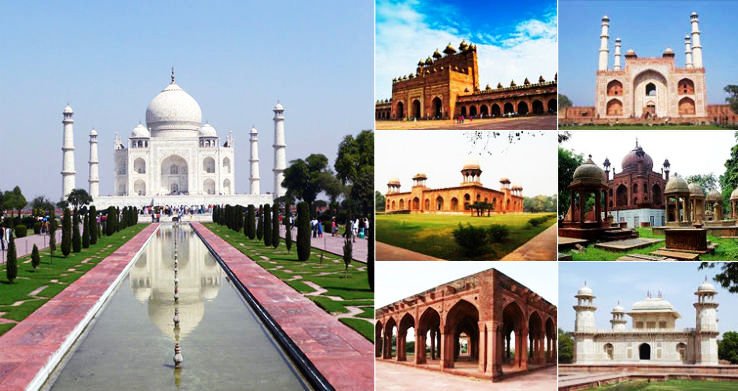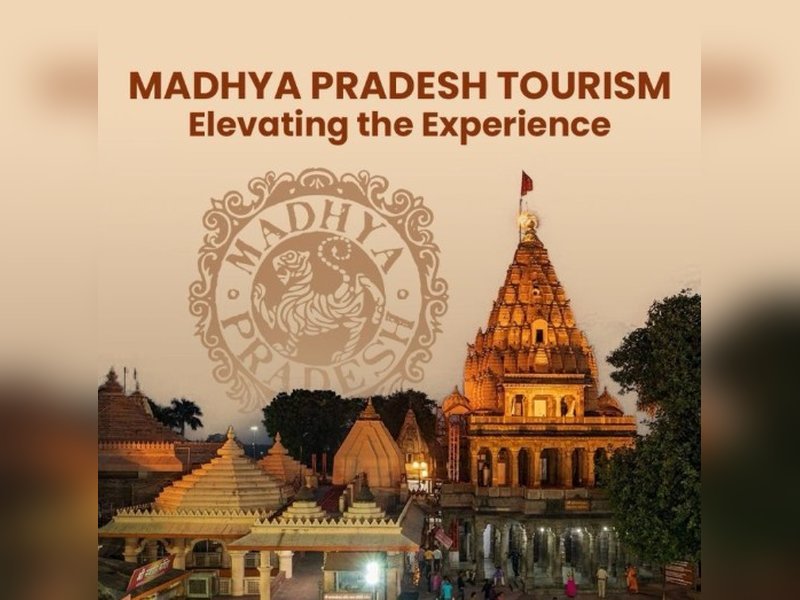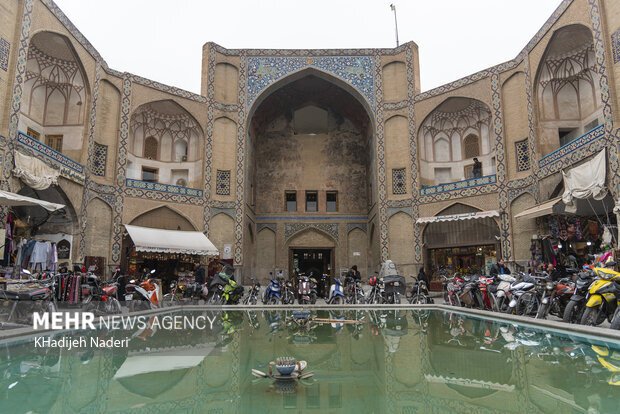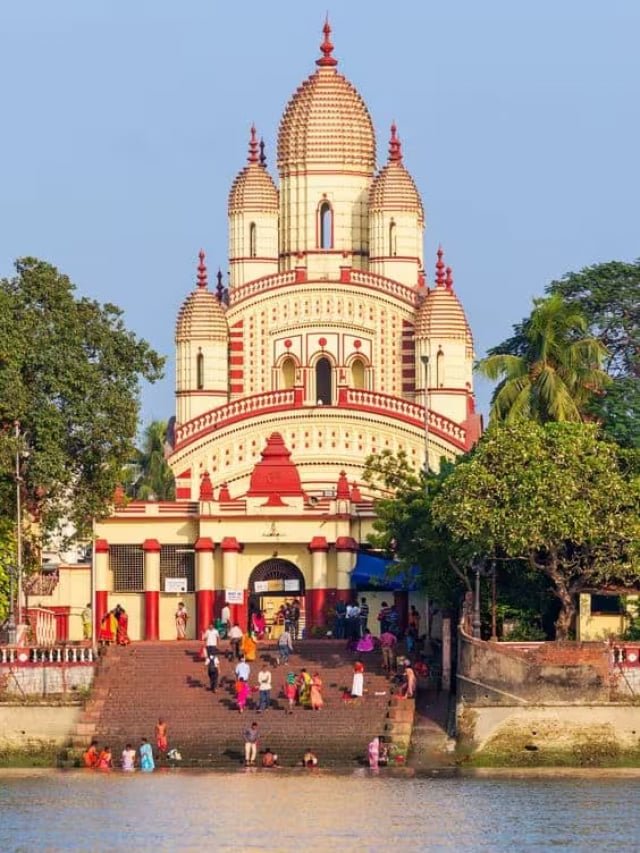Spiritual Travel
Spiritual tourism puts Uttar Pradesh on path to progress

The global economic downfall brought about by the outbreak of pandemic in 2020 was triggered in big part by the collapse of tourism industry and tourism has played an equally important role in the recovery that one has seen around the world in the last two years .
It needs no further study to prove that tourism rescues and drives the economy. It helps in solving many economic issues that often plague even good and robust economies, such as employment generation, regional imbalances, lack of supplementary incomes, foreign exchange defects or balance of payments. Similarly, tourism also helps in solving many social and cultural issues even between the most diverse communities of the hosts and the guests.
In many civilisations, tourism began with teerthatan, where people travelled for religious and spiritual purposes but always supported economies as its natural benefit, and it also is the most sustainable social form of tourism till date and not just in India.
The state of Uttar Pradesh has been in the forefront and over the last eight years or so, the state has realised the power of spiritual tourism to drive the entire tourism industry forward.
Historically, too, domestic tourism in India has been dominated by spiritual tourism and visitations to key spiritual sites across the country outstrip global icons of spiritual tourism like the Vatican City and Mecca by a wide margin.
Diversifying tourism beyond Taj Mahal
Having relied for long on Taj Mahal as its focus for promoting tourism, domestic and international, Uttar Pradesh has been missing out on other destinations and aspects that could help it attract more tourists. Even the travel trade in the state and the country was content to rely solely on the Taj Mahal and Agra to drive their business ahead.
However, with the development of new destinations, notably in spiritual tourism, and improved infrastructure and connectivity within the state as well as of the state with the rest of the country and even overseas, Uttar Pradesh is now reaping the benefits of a broader appeal as a tourism destination.
In the past few years, the state government has been working consistently to leverage the power of tourism by way of four-pronged strategy, namely identification, planning, time-bound implementation and quantifiable monitoring .
Source: Jefferies Report & Statista
| Country | Spiritual Centre | Footfall (in Millions) |
|---|---|---|
| Saudi Arabia | Mecca | 15.4 Million |
| Vatican City (Italy) | Saint Peter’s Basilica | 6.76 Million |
| Uttar Pradesh | Varanasi, Ayodhya, Prayagraj, Mathura | 540 Million |
The mapping of tourism circuits of religious importance in the state was a huge step in this direction. Be it the Ramayana circuit or sites linked to deities like Krishna, Buddha, Jain Tirthankars or even the great Sufi saints, have all been mapped strategically, with a primary objective to boost the state’s economy through tourism in a time-bound manner.
In 2018 and later in 2022, the Uttar Pradesh Government came up with a very futuristic tourism policy that has attracted huge investments in the state which has actually become an example of planned tourism development for other Indian states to follow.
The policy not only incentivised tourism projects but also paid huge attention to employment generation, participation of women in tourism and skilling youth for tourism and more. The policy is quite holistic in nature and deals with rural, agricultural, ecological, urban and adventure tourism in equal measure and also conforms to the guidelines of responsible tourism. As a result, tourism in Uttar Pradesh is emerging as an economic equaliser, spreading benefits in all regions of the state.
For the first time, forlorn regions of the state, notably Bundelkhand and Poorvanchal, have been brought into focus. How interesting is the fact that tourism is an activity that can happen even in the regions that may not be so rich in natural resources or have fertile land. Where many businesses fail, tourism may still flourish. Regions that were long ignored have finally found a saviour in this government through tourism.
In 2019, Uttar Pradesh was the most visited state in the country, taking a sizeable share of 23.1 pc of overall domestic tourism market that translated into about 536 million tourists. In terms of international arrivals, the situation of the state was no less encouraging as it was visited by about 4.75 million overseas tourists, over 40 pc of the total foreign visitors to India that year.
When international tourism came to a stand-still due to the pandemic, it was domestic tourism that came to the rescue, and most of it was driven by spiritual purposes. The latest figures have far left behind the pre-pandemic numbers and in many places of the state, the annual footfall of the past is equal to the monthly footfall now.
Uttar Pradesh is one state where not only Gods dwelled, but Gods and saints were actually born, including Lord Rama and Lord Krishna and then, there were great sages and preachers too, who took birth here or made it their home, two names that very few would know are those of Swami Narayan of Akshardham fame and Maharishi Patanjali to whom the credit of Yoga and Indian traditional medicine system is attributed to. Saint Kabir, Ravidas, Goswami Tulsidas, Surdas and so many more were born here. Also, Lord Shiva made Kashi his home which is one of the 12 Jyotirlingas or holiest sites of Hinduism. There are also about five Shakti Peethas, or temples dedicated to Goddess Shakti and her avatars and of course, the Gorakhnath temple of Nath monastic in Gorakhpur.
A hectic spiritual calendar
Being home to so many religious sites of importance, Uttar Pradesh has a a very busy spiritual calendar, with numerous festivals and events that attract millions of pilgrims from all over the country and even across the world.
The biggest such event is the Kumbh Mela, which is held at Prayagraj, earlier known as Allahabad, on the confluence of three rivers, the Ganga, Yamuna and Saraswati. The main Kumbh takes place every 12 years and is recorded as the largest gathering of humanity in the world and by a wide margin. Over a period of barely 60 days, as many as 250 million pilgrims and other visitors gather on the banks of the rivers to offer their prayers and be part of a key event on the Hindu calendar.
The next edition of the ‘Maha Kumbh’, as it is called, will take place in a few months from now and is slated to begin on January 13, 2025. The last Kumbh, which was not even a ‘Maha Kumbh’, held in 2019, saw over 250 million pilgrims and tourists and next year, as many as 400 million visitors are expected within a span of less than 2 months.
Prayagraj is also a host to an annual religious fair at the same site named as Magh Mela, which can be best described as a miniature Kumbh Mela and is quite popular with the tourists. Other major spiritual events in Uttar Pradesh include Ram Navami, which marks the birth of Lord Rama, and Diwali in Ayodhya, Shiv Raatri, honouring Lord Shiva, in Varanasi, Krishna Janamashtami, the birth of Lord Krishna and Holi, the festival of colours, in Mathura-Vrindavan and Eid and Muharram in Lucknow. All of these events attract a large number of tourists and contribute significantly to local economies in terms of revenues and employment.
Buddhism is yet another important attraction for spiritual tourism in Uttar Pradesh with important Buddhist centres like Sarnath, Sravasti, Kushinagar, Kaushambi, Kapilvastu and Sankisa which are a must-visit for Buddhist pilgrims, not just from India, but also from China, Japan, Thailand, Myanmar, Vietnam, Cambodia, Sri Lanka, Bhutan, Laos and Mongolia. Many Buddhists from Europe and the Americas also turn up here.
Pathways for progress
Looking ahead, as part of its programme to develop the sector further and boost tourism to Uttar Pradesh further, the government has initiated several projects of which at least three mega projects can prove to be game changers. These are Kashi Vishwanath Corridor in Varanasi, Ayodhya Development Project and the Vindhyanchal Corridor. All these are examples of urban planning with tourism in focus, proving that the state government sees tourism as an economic driver of growth.
Ayodhya, in particular, is the highlight, as it has emerged as India’s hottest tourist destination. With planning from scratch and all-round and time-bound development of infrastructure, Ayodhya has become the most popular destination in the present times where everyone wants to visit and be blessed by Lord Rama.
In terms of infrastructure, Uttar Pradesh now has the highest number of international airports in India, and about 20 airports connect the state to the rest of India. Uttar Pradesh also has an impressive and enviable road network which includes a network of almost 10 expressways, highest in any state of India and many others under planning or construction. The government is also increasing the network of heliports which will provide last mile air-connectivity even to the remote locations. Similarly, many river cruises have begun operating in Rivers Ganga and Saryu, and an increasing availability of water sports activities in the numerous rivers that criss-cross Uttar Pradesh are also leveraging the growth of tourism here.
The launch of international airports at Kushinagar and Ayodhya are examples of building robust infrastructure for tourism and the biggest boost to connectivity would be provided when Jewar Airport in Greater Noida, a greenfield project, will become operational. Not only would it be in contention to become India’s largest and the most superior airport, it would change the destiny of Indian aviation and tourism. Similarly, Agra is about to get a new civil airport to make it more accessible by air with the rest of India. Then there are developments for enhanced passenger and cargo capacities at existing international airports of Lucknow and Varanasi which would also boost air connectivity of the state significantly.
Being a large state, rail connectivity in Uttar Pradesh has always been good, but now with the modern and high speed trains like Vande Bharat and Tejas touching the state’s important tourist places and a highly awaited glass dome train in Dudhwa National Park passing through the dense forest that is home to a rich wildlife, are all set to further enhance tourist connectivity and experience in the state.
Historically, Uttar Pradesh was always a major tourism destination and the continued efforts of the state are poised to propel this growth to the next level. The government of Uttar Pradesh has set a target to double the state’s economy to USD 1 trillion by 2027 and contribute significantly to India’s vision of becoming a USD 5 trillion economy. And I am certain that the development of tourism would play a key role in helping the government achieve its target.
Spiritual Travel
MP now heartbeat of global tourism, 134.1 million tourists visited last year

Jaipur, July 19 (IANS) With its sweeping landscapes, sacred rivers, vibrant culture and world-class heritage, Madhya Pradesh is no longer just the ‘Heart of India’ — it’s becoming the heartbeat of global tourism.
This message rang loud and clear during the Madhya Pradesh Tourism Board’s roadshow held at Jaipur’s Jai Mahal Hotel on Friday.
Speaking to a packed event of tourism stakeholders, filmmakers, and hospitality professionals from both Rajasthan and Madhya Pradesh, Additional Managing Director of Madhya Pradesh Tourism Board, Bidisha Mukherjee, highlighted the state’s soaring popularity.
In 2024 alone, Madhya Pradesh welcomed 134.1 million tourists, with 70 million visiting for religious and spiritual experience, to Mahakaleshwar and Omkareshwar Jyotirlingas, Chitrakoot, Maihar, and Amarkantak, the sacred origin of the Narmada River.
But spiritual tourism is just one facet of Madhya Pradesh’s appeal.
“We want to showcase the hidden gems of Madhya Pradesh to the world,” Mukherjee said.
“From majestic temples to dense jungles, from tribal art to local cuisine — we’re creating experiences, not just sightseeing tours. We’re building a sustainable, immersive, and community-led tourism model that speaks to the soul of every traveller.”
In an interesting pitch, she proposed an exciting expansion of the iconic Golden Triangle tourism circuit which she said can work miracles if turned into an arch.
“Imagine tourists travelling from Agra to Gwalior, then exploring the Orchha-Gwalior-Datia belt,” she said.
“Those coming from Chittorgarh can easily explore Mandsaur, Ujjain and Omkareshwar — blending Rajasthan’s desert heritage with Madhya Pradesh’s water sports and adventure tourism offerings in a single trip.”
She also added that Madhya Pradesh is home to three UNESCO World Heritage Sites — Khajuraho, Sanchi and Bhimbetka — and 15 others on India’s tentative list, making up a quarter of the country’s UNESCO sites.
Madhya Pradesh also boasts a vibrant cultural identity, with tribal traditions like the Bhagoria dance, Gond paintings, and the Narmada Parikrama pilgrimage recognised on India’s National Intangible Cultural Heritage list, she said.
With titles like Tiger State, Leopard State, Cheetah State, and even Vulture and Gharial State, Madhya Pradesh has something for every nature lover, Mukherjee added.
It is a wildlife haven and with all these products, the number of tourists soared from 11.41 crore to 13.42 during 2023 to 2024, she said.
With the upcoming Tourism Policy 2025, Madhya Pradesh is also rolling out the red carpet for investors, she added.
The policy offers attractive incentives, including 90-year land leases, low stamp duties, and e-tender processes for accessing land, wayside amenities, and heritage properties.
Ultra-mega tourism projects with investments more than Rs 100 crore can even be allocated land directly.
The Madhya Pradesh Tourism officials also said: “It is not tourists who are flocking to Madhya Pradesh — the film industry is also being lured to the state. With a dedicated Film Facilitation Cell, shooting permissions are now fast-tracked. Since the launch of its film policy, more than 400 film and OTT projects have been shot in Madhya Pradesh, including Stree, Stree 2, Bhool Bhulaiyaa 3, Sui Dhaaga, Laapataa Ladies, Padman, Dhadak 2, Panchayat, Kota Factory, Gullak, and Citadel.”
No surprise then that the Indian government named Madhya Pradesh the “Most Film-Friendly State” for 2017–2020, she added.
Mukherjee concluded with a smile, saying: “Madhya Pradesh offers ‘sab kuch jo dil chahe’. The world is welcome to discover it.”
–IANS
arc/khz
Spiritual Travel
5 Spiritual Destinations You Can Visit with Your Partner – News18
Spiritual Travel
First spiritual tourism roadmap for Isfahan bazaar planned

TEHRAN — Isfahan Municipality is set to officially unveil the spiritual tourism routes of Isfahan, highlighting saqqakhanehs (traditional places providing water to the passersby), seminaries, and mosques located within the city’s ancient bazaar, said Alireza Massah, who presides over the municipality’s tourism office.
Speaking at a press conference of a cultural event themed “Isfahan, a Narrative of Love and Art” with focus on spiritual tourism, handicrafts and Muharram rituals, he said all the facilities of Cultural Complex of Isfahan Municipality’s District Four have been made available to the “Narrative of Love and Art” exhibition, Mehr news agency reported.
He said, “Our cultural colleagues have done their best to prepare the space in Chahar Bagh Boulevard in recent days.”
Since the exhibition will continue until 22 at nights, the coordination has been made with Isfahan and Suburbs Bus Company for transferring the artisans and citizens until that time, he added.
Pointing to the special potentials of ritual tourism in Isfahan, he said Takht-e Foulad site is one of the important centers of Isfahan’s spiritual and religious tourism.
This site is not only valuable in terms of architecture and history, the carvings on tombstones, the calligraphy lines, and the mystical concepts engraved on the tombstones are themselves a living museum of the religious beliefs of the people of this land, he mentioned.
He gave news of the role of Specialized Office of National and Ritual Arts of Isfahan Municipality in this event, saying: “This office with cooperation of other cultural bodies, will launch stands in Chahar Bagh and also perform special artistic programs in public space. The event is an opportunity to showcase the artistic potentials associated with religious and spiritual rituals.”
Massah also gave news of planning for revival of spiritual tourism in Isfahan’s historical Bazaar, adding that Isfahan Bazar is full of religious spaces, which includes traditional saqqakhanehs, mosques, seminaries and Hosseinieh which are rooted in Muharram history and culture.
All of them are proper grounds for planning new tourism routes with spiritual approach, he pointed out.
He expressed the hope that these new routes can familiarize domestic and foreign tourists with rarely-seen manifestation of Isfahan cultural heritage, a heritage which has deep ties with Muharram rituals and public beliefs.
KD
-

 Mergers & Acquisitions1 week ago
Mergers & Acquisitions1 week agoAmazon weighs further investment in Anthropic to deepen AI alliance
-

 Mergers & Acquisitions1 week ago
Mergers & Acquisitions1 week agoHow Elon Musk’s rogue Grok chatbot became a cautionary AI tale
-

 Asia Travel Pulse2 weeks ago
Asia Travel Pulse2 weeks agoLooking For Adventure In Asia? Here Are 7 Epic Destinations You Need To Experience At Least Once – Zee News
-

 Brand Stories2 weeks ago
Brand Stories2 weeks agoVoice AI Startup ElevenLabs Plans to Add Hubs Around the World
-

 Mergers & Acquisitions1 week ago
Mergers & Acquisitions1 week agoUK crime agency arrests 4 people over cyber attacks on retailers
-

 AI in Travel2 weeks ago
AI in Travel2 weeks ago‘Will AI take my job?’ A trip to a Beijing fortune-telling bar to see what lies ahead | China
-

 Mergers & Acquisitions1 week ago
Mergers & Acquisitions1 week agoEU pushes ahead with AI code of practice
-

 Mergers & Acquisitions2 weeks ago
Mergers & Acquisitions2 weeks agoChatGPT — the last of the great romantics
-

 The Travel Revolution of Our Era1 month ago
The Travel Revolution of Our Era1 month agoCheQin.ai Redefines Hotel Booking with Zero-Commission Model
-

 Mergers & Acquisitions1 week ago
Mergers & Acquisitions1 week agoHumans must remain at the heart of the AI story

